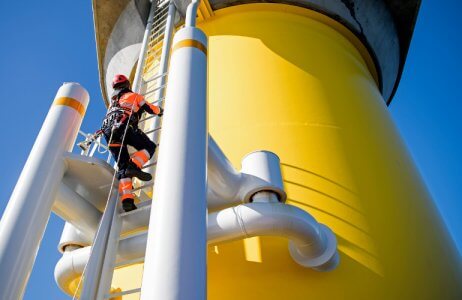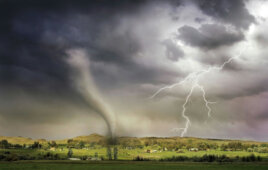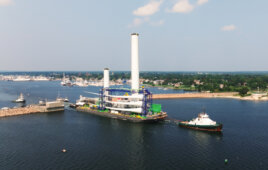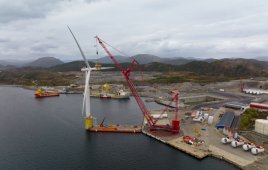By J.L. Baker, CEO, GattiHR
Many labor and workplace training concerns soon await the U.S. wind energy sector. In fact, several are unfolding right now.
The industry currently employs about 7,000 wind-turbine technicians. That’s no doubt a hefty amount of labor. But according to industry reports, it’s not enough. Not even close.
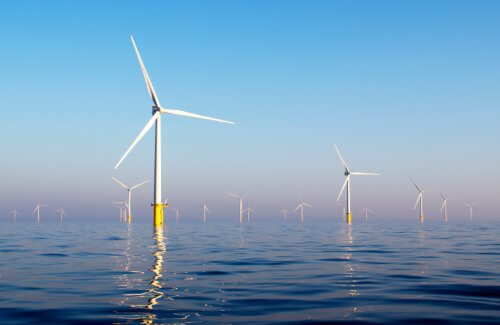 To meet the overwhelming demand for wind energy generation, federal officials say the United States will need about 4,700 more wind turbines technicians — a 68% rise in labor by the close of the decade.
To meet the overwhelming demand for wind energy generation, federal officials say the United States will need about 4,700 more wind turbines technicians — a 68% rise in labor by the close of the decade.
That’s an overpowering increase — and yet one that drastically underestimates actual labor demand, one trade group claims. The American Clean Power Association predicts that the actual number of wind technician jobs will surge to more than 18,000 by 2030 — infinitely higher than what the U.S. Bureau of Labor Statistics forecasted when it ranked the profession as one of the nation’s fastest-growing jobs.
Equally concerning is how much of the current labor force lacks “long-term experience” working on turbines, Harvest Energy Services reports. “Even if they did (have more experience), there’s a huge amount of work for them to carry out,” the report’s authors said.
One last kicker: Most of these turbine technicians have worked onshore turbines, not offshore. That’s because the United States, despite being a global leader in onshore wind energy generation, significantly lags in offshore wind capacity, for now.
An assortment of private and public initiatives — impressive in size and scale and grander in sheer monetary investment — are fast in the works. Construction is underway at the country’s first utility-scale offshore wind energy project, more than 15 miles off the coast of Massachusetts. Proposals are also in the works for various offshore wind projects along the northeastern shoreline.
That is if the United States can muster the skilled labor to pull it off.
How does the country recruit and train thousands of workers who have never worked on offshore wind turbines in less than a decade? Now is the time to begin closing the offshore wind technician skills deficit with emerging technology, robust human sources strategies and innovative training regimes.
Here are three steps the offshore energy sector can take to close the wind technician shortfall.
Use niche job boards and recruitment agencies
 What job board or digital channels do hiring departments most commonly use to source hard-to-find candidates in far-off regions? Indeed, LinkedIn, Monster?
What job board or digital channels do hiring departments most commonly use to source hard-to-find candidates in far-off regions? Indeed, LinkedIn, Monster?
Each platform proudly claims to be the jack-of-all-trades, posting jobs from nearly every industry to show practically everyone. Hirers get views, even applications, but rarely from the suitable candidates.
These channels are generalist recruiting instruments, dabbling in countless sectors. Many recruitment agencies suffer from the same lack of industry-specific expertise. And their audiences aren’t what the renewable offshore energy sector sorely needs. Most experienced wind technicians are not on these platforms.
A more tactical approach is using niche job boards backed by specialized recruiting agencies. Industry-focused job boards use multimodal, geographic-specific methodologies that, based on the characteristics of the job ad, allow hiring departments to reach the audiences they need in the exact locations they require faster.
Further, niche HR recruitment technologies offer more qualified job leads in less time and more cost-effective measures by advertising the job position on all applicable sites, not just one. For instance, in small rural communities, jobs are promoted on hyperlocal job boards and classified advertising websites in addition to brand-name employment sites. In college towns, word spreads through alumni networking channels and campus job fairs, creating visibility and accelerating reach.
Create, don’t find, your next wind-turbine team
Even with the best-reaching capabilities, the offshore wind sector cannot recruit a workforce that has worked on 15 other offshore wind projects because, unlike several other countries, the United States hasn’t had that many offshore projects.
Instead, sourcing and plucking talent from other energy sectors would be better, including onshore wind energy generation and fossil fuel energy production like coal, oil and natural gas.
Then, companies should retrain them — digitally, at home with new, specialized digital training technologies, not away, which turbine training traditionally involves.
While research shows that the main method of training for offshore wind technicians includes long-term on-the-job training, there are numerous methods for hastening their education and expanding their experience with today’s new array of digital training programs.
For example, while the skillset required by fossil fuel energy generation differs from wind energy production, many attributes, including working in inclement weather and comfort in climbing large, towering structures, transfer to offshore wind. Also, each skill is transferable for serving, installing, maintaining and repairing offshore turbines.
The offshore wind sector could also hire and retrain onshore wind technicians. While the composition of onshore turbines differs from their onshore peers (they’re larger, include more unknown variables and involve more complex engineering), many of the basic skills still apply and are transferable, fast-tracking work to recreate wind generations next workforce.
Get tomorrow’s workforce more excited
The immediate need for more wind turbine technicians, paired with the sector’s notable talent shortfall, means one thing above all else: more rewarding career and financial opportunities for those throughout the industry in the years ahead.
Better get the word out.
That means present-day sixth graders need to know about the job opportunities that await them as soon as they graduate from high school. Young middle schoolers in rural regions in the Midwest and Northwest, where onshore wind turbines are familiar sights, would be great future candidates for offshore wind opportunities.
But to do that, the industry must excel more at disseminating valuable educational resources for apprentices looking to dabble in a fast-growing field. The full-fledged PR front must include digital instruments such as email and social media engagement.
In other words, offshore wind companies should begin training tomorrow’s workforce before they’re ever really interested in working.
Sow the seed now — with today’s emerging workforce and the generation coming in close behind.
 J.L. Baker is the CEO at GattiHR, a leading talent solutions company and the country’s largest HR specialized search firm. His company recently announced that its high-velocity recruiting and training platform TalentBoost helped a global public utility company quickly fill a pressing need — more offshore wind turbine operators.
J.L. Baker is the CEO at GattiHR, a leading talent solutions company and the country’s largest HR specialized search firm. His company recently announced that its high-velocity recruiting and training platform TalentBoost helped a global public utility company quickly fill a pressing need — more offshore wind turbine operators.
Filed Under: Featured

